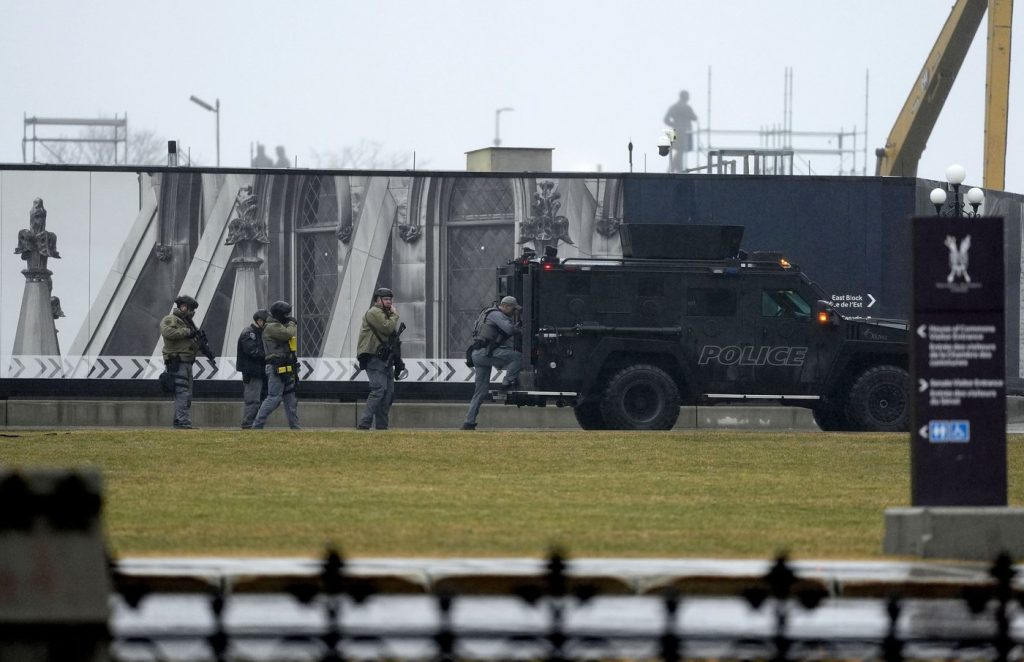N.S. jail cell attack was to remove inmate, not murder him, defence lawyer argues
Posted Sep 29, 2021 07:10:51 PM.
HALIFAX — Defence lawyers in a trial involving Nova Scotia inmates accused of attempting to murder a newly arrived prisoner in 2019 argued Wednesday the assailants wanted to evict the man from their unit, not kill him.
Kyle Williams told the Nova Scotia Supreme Court in his closing statements it’s possible inmates wanted to force Stephen Anderson from the unit because they thought he had a prior sexual assault conviction.
He added that if the inmates were determined to kill Anderson on Dec. 2, 2019, they would have chosen a more lethal method of attack.
“Had the assailants wanted to kill Mr. Anderson, they surely would have targeted the neck,” the defence lawyer argued.
Williams, who is representing inmate Kirk Carridice, said it was part of the “culture” of detainees in the North 3 unit at the Central Nova Scotia Correctional Facility to be against living with sex offenders.
He noted evidence that Anderson had a conversation before the attack with three inmates inside his cell, adding it’s reasonable to assume “the inmates went into his cell to provide him with an ultimatum … and Anderson refused that offer.”
The defence lawyer didn’t contest video of Carridice punching Anderson as the victim appeared to try to leave the cell — some of the only footage presented at trial showing the violence inflicted on the inmate.
There is no video of what happened inside Anderson’s cell after a group of inmates entered it. Therefore, the lawyers argued, it’s not possible to prove beyond a reasonable doubt which of the men administered the blows and punctured Anderson’s torso with a sharpened instrument.
The trial involves six of 15 inmates facing charges of conspiracy to commit murder, attempted murder, unlawful confinement, aggravated assault, assault with a weapon and obstructing a peace officer. Two more trials are expected later this fall.
The current trial includes Carridice, Jacob Lilly, Wesley Hardiman, Omar McIntosh, Matthew Lambert and Colin Ladelpha. A trial for another eight accused in the case is scheduled to begin Nov. 10, and a ruling in both cases is expected Nov. 29.A third trial for the 15th inmate involved is occurring this fall as well.
Defence lawyer Ian Hutchison, whose client, Lilly, is also accused of assaulting an officer, said the Crown never called Anderson as a witness, adding that it defies common sense that 15 people conspired in about 15 minutes to commit a murder.
He echoed Williams’s view that it’s possible the attack occurred in order to “bounce” Anderson from the unit, adding that the Crown could have called the victim to ask him what he thought was the intent of the assailants.
“There was one way to explain to the court what took place, and that was to call Anderson,” Hutchison said in his closing argument. “But there was no evidence, my Lord, from Mr. Anderson.”
The Crown has argued that Brian James Marriott, who faces trial later this fall, told Lilly to round up other inmates for the attack. It has also argued that 11 inmates gathered in a cell on the second floor of the unit to quickly work out details of the attack.
Several defence lawyers, however, have said there was no evidence presented to the judge as to what was discussed during the meeting of inmates in the second-floor cell, and Hutchison said it’s unclear what Lilly heard from Marriott.
Madeline Smillie-Sharp, the lawyer for Lambert, brought up officer testimony about laughter that was heard from the second-floor cell — hardly a sign of a murder plot, she said.
Evidence that Lambert’s hands were red after he came out of victim’s cell following the assault was weak, Smillie-Sharp said, because the officer who gave that testimony was short in stature and didn’t have a clear view.
Pavel Boubnov, Hardiman’s lawyer, concurred with the other defence lawyers. He said Anderson’s blood on his client’s clothing after the attack could have come from the pools of blood on the floor and walls of the cell.
“For whatever reason, he (Hardiman) went in to observe … There is no evidence he participated in an assault proper other than he was at the place of the offence,” Boubnov said.
Crown prosecutor Rick Woodburn, who delivered his closing arguments Wednesday afternoon, provided a lengthy PowerPoint presentation to make his case against each inmate. He replayed close-ups of video to emphasize what he described as a carefully choreographed attack.
He said the attack against Anderson came within moments of the first three inmates entering his cell, adding that it’s unlikely he was offered a chance to leave. “Everyone who was in the cell was sent in to beat on him and stab him,” the prosecutor said.
He pointed to the way inmates who didn’t enter the cell carefully formed a wall to prevent officers from intervening during the two minutes and 45 seconds the assault occurred.
He said the violence inflicted on the victim was more severe than inmates normally employ to evict an unwanted prisoner.
“This (attack on Anderson) is not bouncing,” Woodburn told Justice Jamie Campbell. “Bouncing is small assault or words and the inmate ends up at the front counter of the unit and wants to get out of there.”
What happened to Anderson, Woodburn said, “was a very intricate plan put together very quickly.”
This report by The Canadian Press was first published Sept. 29, 2021.
Michael Tutton, The Canadian Press








